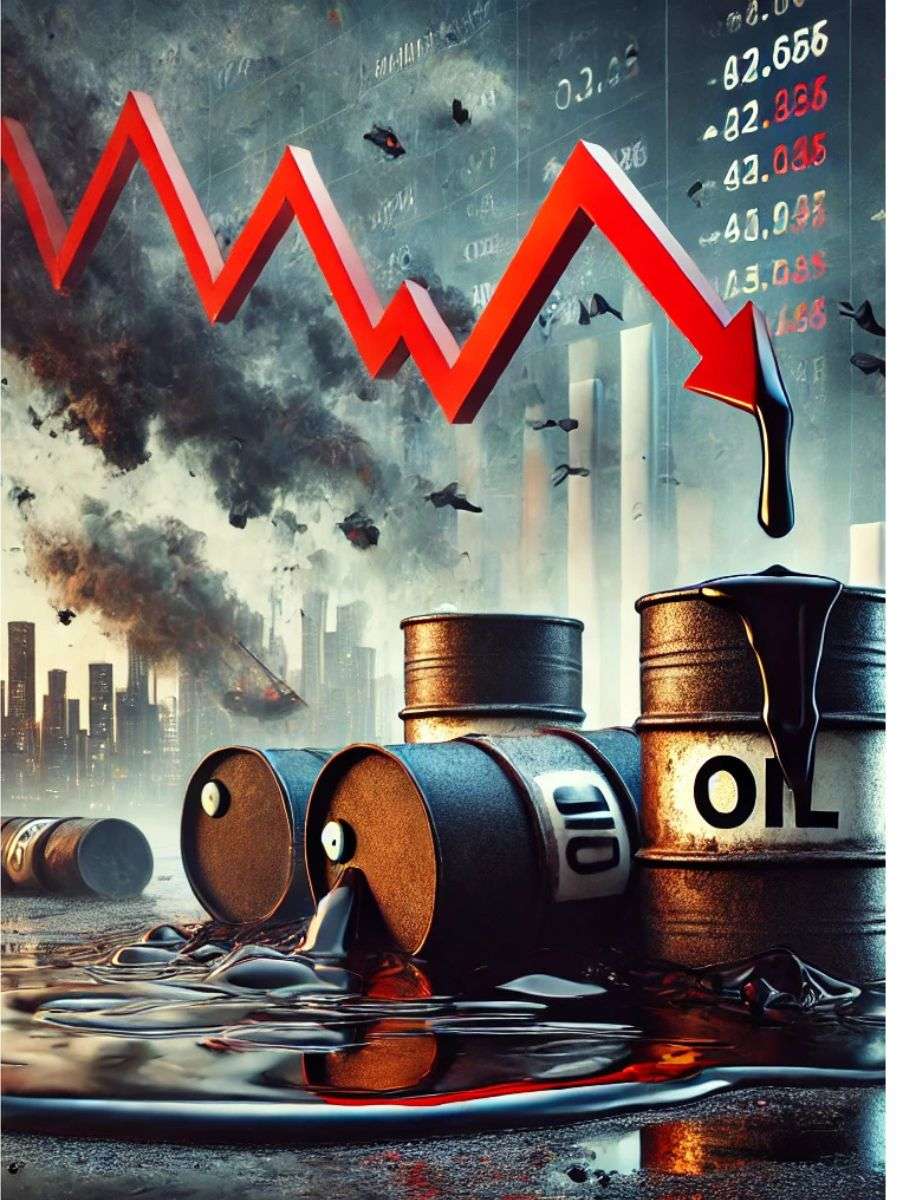In a week marked by global uncertainty, crude oil prices saw a significant decline. Brent crude futures fell 4%, while US West Texas Intermediate (WTI) fell 5%, reflecting waning demand in key markets such as China and the cautious pace of adjustments to interest rates by the US Federal Reserve. This analysis highlights the factors influencing the oil market, regional trends, and future outlook.

Oil prices: Overview of Current Oil Market Trends
Brent crude futures closed at $71.04 per barrel, down more than 2% in the recent session. WTI did the same, closing at $67.02, marking a weekly decline. The global energy market reacted to weak Chinese demand and growing speculation about the Fed’s monetary policy.
On the Multi Commodity Exchange (MCX), India’s crude oil futures reflected this trend, closing 1.86% lower at ₹5,660 per barrel. Such synchronized declines highlight the interconnected nature of global oil markets.
Key factors behind the decline
Declining Chinese demand
China, the world’s largest crude oil importer, saw refinery throughput fall 4.6% in October. The decline was driven by plant shutdowns and reduced operating rates, particularly among smaller refiners. China’s economic health remains a concern for energy markets, with a slowdown in factory output and persistent troubles in the property sector.
US Federal Reserve rate policy
Signs of a slower-than-expected pace of US interest rate cuts have dampened investor sentiment. While low interest rates typically boost economic growth and fuel demand, uncertainty about the Federal Reserve’s next steps has created a cloud of unpredictability.
Global Economic Factors
Broadly, the global economy is facing challenges from declining industrial production and the growing trend of electric vehicles. These trends point to a structural shift in energy consumption patterns.
Regional Analysis of Oil Prices
Asia Oil Market Dynamics
Asia remains important in oil demand due to countries such as India and China. However, economic slowdown and fluctuations in demand are leading to softening of oil prices.
US Oil Market Trends
The US remains an important player, with domestic production estimated to rise to 13.23 million barrels per day. While this increase in supply strengthens market stability, it also contributes to limiting prices amid sluggish global demand.
Expert Insights on Future Projections
Analysts’ Predictions
Analysts expect crude oil prices to remain volatile, with resistance levels around $68.95-$69.55 and support zones around $67.85-$67.10. Such forecasts underscore the delicate balance of market forces.
OPEC and IEA Forecasts
Both the Organization of Petroleum Exporting Countries (OPEC) and the International Energy Agency (IEA) have revised their demand forecasts, citing factors such as China’s economic challenges and the growing penetration of electric vehicles.
Economic Policies and Their Impacts
Tariffs and Trade Wars
Trade policies, including US-China tariffs, threaten to disrupt global energy flows. The prospect of higher tariffs under the new US administration could exacerbate these issues, further reducing demand.
Federal Reserve Policies
The Federal Reserve’s cautious approach to rate cuts keeps markets on edge. The probability of a rate cut in December is now between 50% and 60%, leaving room for speculation.
Challenges and Opportunities in the Oil Sector
Challenges for Refiners
Refiners face significant challenges, including operational shutdowns and declining profitability amid fluctuating demand.
Opportunities in Green Energy
As electric vehicles become popular and alternative energy sources develop, the oil industry must adapt to the changing energy landscape.
Frequently Asked Questions About Oil Prices and Market Dynamics
Question 1: What factors most influence crude oil prices?
Supply-demand dynamics, geopolitical events, and economic policies are key drivers.
Question 2: How do Federal Reserve policies affect oil demand?
Rate cuts typically boost economic activity, which increases fuel demand. Conversely, slow rate cuts can dampen sentiment.
Question 3: Why is China an important player in the oil market?
China’s status as the largest crude oil importer makes its economic trends important to global oil markets.
Question 4: What are the projected trends for oil prices in 2024?
Prices are expected to remain volatile with potential pressures from rising production and changing demand.
Question 5: How do OPEC decisions affect global oil prices?
OPEC’s production policies directly affect supply, often stabilizing or driving price fluctuations.
Question 6: Is the shift to electric vehicles a long-term threat to oil demand?
Yes, the rise in EV adoption is a major threat to conventional oil consumption.
Conclusion
Crude oil markets are navigating a complex interplay of subdued demand, policy shifts, and evolving consumption trends. While challenges persist, the industry’s ability to adapt to changing dynamics will shape its future trajectory.
ZERODHA 1) : https://zerodha.com/open-account?c=EJ4366
Angelone 2) : https://tinyurl.com/2gloc3g6 or
Upstox3): https://link.upstox.com/9w4tNo1rK8au7VK47









